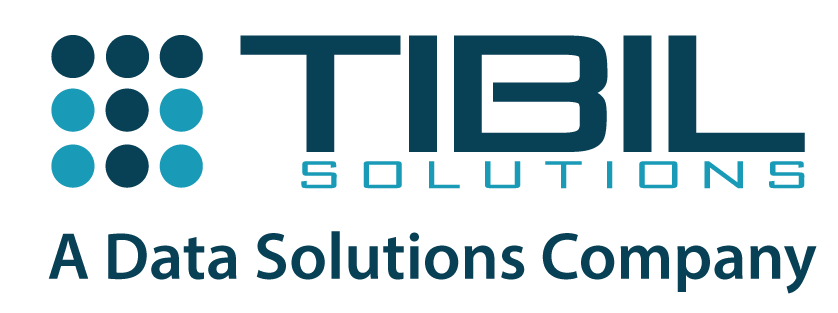
“BFSI Firms Need Rapid Risk Management Changes”
Chris Skinner, author of books like Digital Bank and ValueWeb, says – Now we’re seeing what I call ‘the complete open sourcing of financial services’ through apps, APIs and analytics. So the front office relationship is in an app. The middle office processing is through an API, and the back office is all about for analytics.
The sheer amount and pace of change in banking and financial services over the last decade has been mind numbing, and near nightmarish for risk managers.
Even as banking has become fast, easy and personalized; the tolerance for any errors and dishonest business practices has dramatically decreased (rightly so). While digital transformation has opened new business models for financial services companies, customers’ expectations of banking services have tremendously increased. Risk functions in banks now have to manage new types of risk, including models and cyber; besides managing compliance with ever evolving regulations. Additionally, they are expected to deal with these trends at a lower cost, because banks (like other services companies) expect to reduce their operating costs substantially when they adopt new technologies.
The good news. Data engineering and advanced analytics are enabling new products, services, and risk-management techniques – enabling risk managers make better choices about risks. The challenge, of course, is in finding the right solution that can scale with the organization, cover all the bases, integrate seamlessly with the bank’s enterprise systems, and does all of this in a cost-effective fashion.
Let’s take a look at some of the key trends in Technology in Banking.
Digitization
Winning customers in the highly competitive, globalized banking and financial services industry is a battle that is increasingly being fought on the digital front. As digital technologies are rapidly changing life and work in every other sphere, customers expect intuitive experiences, access to services at any time on any device, customized propositions, and instant decisions – from their banking. This entails re-imagining the bank / financial services company from a customer-experience perspective and digitization. The risk function plays a critical role here collaborating with the business and technology functions across the entire transformation journey.
Automation in Compliance
Omni channel banking has thrown up a challenge – how to accurately validate the identity of persons applying for new accounts or performing transactions. Whatever channels are used, for a bank to approve new accounts or any transaction, it must draw data from multiple, disparate sources, analyze it and demonstrate the risks quickly, for informed decision-making. Digitizing the underwriting processes and increasing use of data analytics are visible trends of automation in compliance.
Even as regulation is becoming complex and noncompliance less tolerated, banks have to eliminate human interventions in risks dealing with customers and seamlessly connect right behaviors to products and services. Quite simply, automation in compliance is the best way to ensure accurate oversight (that can save millions).
Real-time decisions and service
Gone are the days of filling up laborious application forms and surviving long IVR-driven calls. Banks now have to offer real-time answers to customer requests with customized processes. As Risk managers seek to find ways to help banks assess risks and make decisions without human intervention, they have to contend with the use of more non-traditional data sources. For example, some banks have re-designed account opening with much of required data prepopulated from public sources to make the experience as simple, fast and short. However, establishing a secure and customer-friendly approach for identification and verification becomes yet another challenge for the Risk manager.
Big Data
Humongous amount of customer data is available and accessible to banks, including customer-payment and spending behavior, social-media presence, and online browsing activity, to aid in risk-intelligent decision-making. Companies have started using external, unstructured data not only for better credit-risk decisions, but also for portfolio monitoring and prediction of profitability.
Machine Learning powered Analytics
Machine learning identifies complex, nonlinear patterns in large data sets and springs insights that make more accurate risk models possible. These models learn with new information they acquire and improve the risk function’s ability to predict continuously. Several banks and financial services companies have started using machine learning, especially in credit rating, collections, and credit-card-fraud detection.
Use of advanced analytics is not just about Risk. It is about serving the customers with excellence too. To quote Chris Skinner again – This, to me, is the battleground when I’m talking about the digital revolution, the digital human, the digital bank: If you do not get cognitive, predictive, proactive, custom analytics that give the customer far more informed view about their financial affairs, you will not be the partner for that customer in their financial future.
Well, Banks and financial services companies themselves have such large technology functions in their enterprise today, that many of them can be called fintech companies. When they look for data engineering and advanced analytics expertise, they need a partner who understands the industry and the risk function, has the experience of delivering cutting-edge, comprehensive, cost-effective solutions, and the ability to cover all the bases discussed above. At TIBIL Solutions, we have done it and are continuously evolving our solutions.
Related Posts
AI Toolbox: Creative Content Beyond ChatGPT & BARD
Introduction: In the dynamic landscape of artificial intelligence (AI), ChatGPT and BARD have garnered significant attention for their capabilities in natural language processing and music composition. However, a rich tapestry of AI tools exists...
Ethical Considerations in Generative AI: Ensuring Fair and Responsible Data Analytics
Introduction Generative AI, a transformative subset of artificial intelligence, is revolutionizing data analytics and machine learning. It empowers machines to generate data, images, and text that mimic human creativity. While the potential of...
Building a Better Future with Digital Public Goods
The world is on the cusp of digitization! In this era of digitization, we have transformed the way we communicate, interact, and access information. It has not only changed our personal lives but also has brought an evident transformation in the...
The Role of Artificial Intelligence in Cyber Security
In an era characterised by rapid technological advancements and increasing digitalisation, the field of cyber security faces an escalating and ever-evolving threat landscape. As cyber threats become more sophisticated, organisations must employ...
TinyML: The Future of Edge AI
Artificial intelligence (AI) has been a hot topic in recent years and with good reason. AI has the potential to transform countless industries and improve our lives in numerous ways. However, as powerful as AI can be, it also requires a lot of...
The Evolution of Federated Learning
Uber settled an inquiry into a data breach that exposed the personal data of more than 5,00,000 drivers in 2016 by paying $148 million. A GDPR breach resulted in a $57 million fine for Google in 2020. On-growing data privacy and data breach issues...
Subscribe To Our Newsletter
Lorem ipsum dolor sit amet, consectetuer adipiscing elit. Aenean commodo ligula eget dolor. Aenean massa. Cum sociis natoque penatibus et magnis dis parturient montes, nascetur ridiculus mus

Company
About us
Careers
Contact
Awards
Blog
Offerings
Strategy & Consulting
Managed Services
Solutions
Digital Public Goods
Solutions
Data Solutions
Industry Solutions







